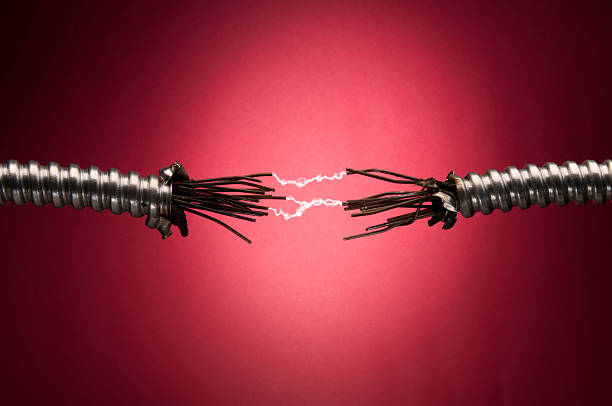Apple is notoriously known for doing nasty cable business. It ships charging cables and wired EarPods that fray with time and use. This forces users to buy new cables from it, thereby increasing the company’s revenue and making Tim happy.
But why wouldn’t we…? Why wouldn’t we need to buy new cables?
Almost everything we do today requires some kind of wired connection. It will, definitely, require some time and patience (maybe 5-6 years) for the right kind of wireless connectivity to emerge. But until then, puny, fragile, cables are our only support. They are what our technological lives revolve around.
Even wireless chargers require a wired connection. None of them are designed and manufactured in dimensions that directly fit a wall socket. Apart from charging, though, iPhones, iPads, and MacBooks require cables for data transfers as well. While you may somehow manage to transfer files containing a few gigabytes of data, you will never be able to wirelessly share a MacBook’s screen on a 5K monitor without a cable.
Sadly, even though cables are still an absolute necessity, their fraying is an incessant nuisance. But there’s one thing you can do to stop that: damage them beforehand.
You can go about doing it in a few ways, for a start:
1. Pull cables out holding them from all the wrong places
Little did you know you can easily, rather naturally, damage your precious iPhone cables by just normally pulling them out as you usually do. You might even be doing it right now.
Cables, as such with iPhone cables, are designed in a specific manner respecting all cases of use. The majority part of the cable, the thin covering, is just there to protect you from the electricity flowing inside. It is only the rigid plastic at the end that is capable of withholding intermittent pressure exerted by your fingers.
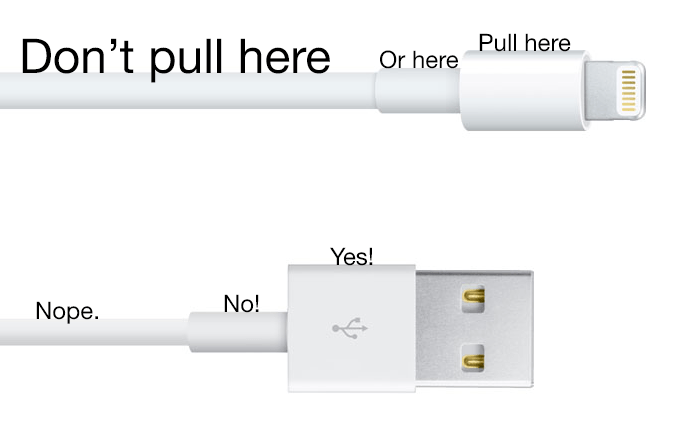
The trick is to not pull out your cables gripping on the rigid part. If you really want to fray and damage your cables, you ought to pull them right from the end where the rigid plastic and the thin wire meets. This way, your cable will snap in no time.
2. Never store your cables neatly.
Using a cable inhumanly is one thing and storing it is another. Proper storage of cables ensures that they last longer, which subsequently saves you money.
But our goal is neither of that long-term hullabaloo. We need to damage our cables as soon as possible. And one more effort in that direction that you could put in is by throwing your iPhone lightning cable or your lightning EarPods in a drawer with all your might. Make sure they are untangled, first.
An occasional slam may be helpful too:
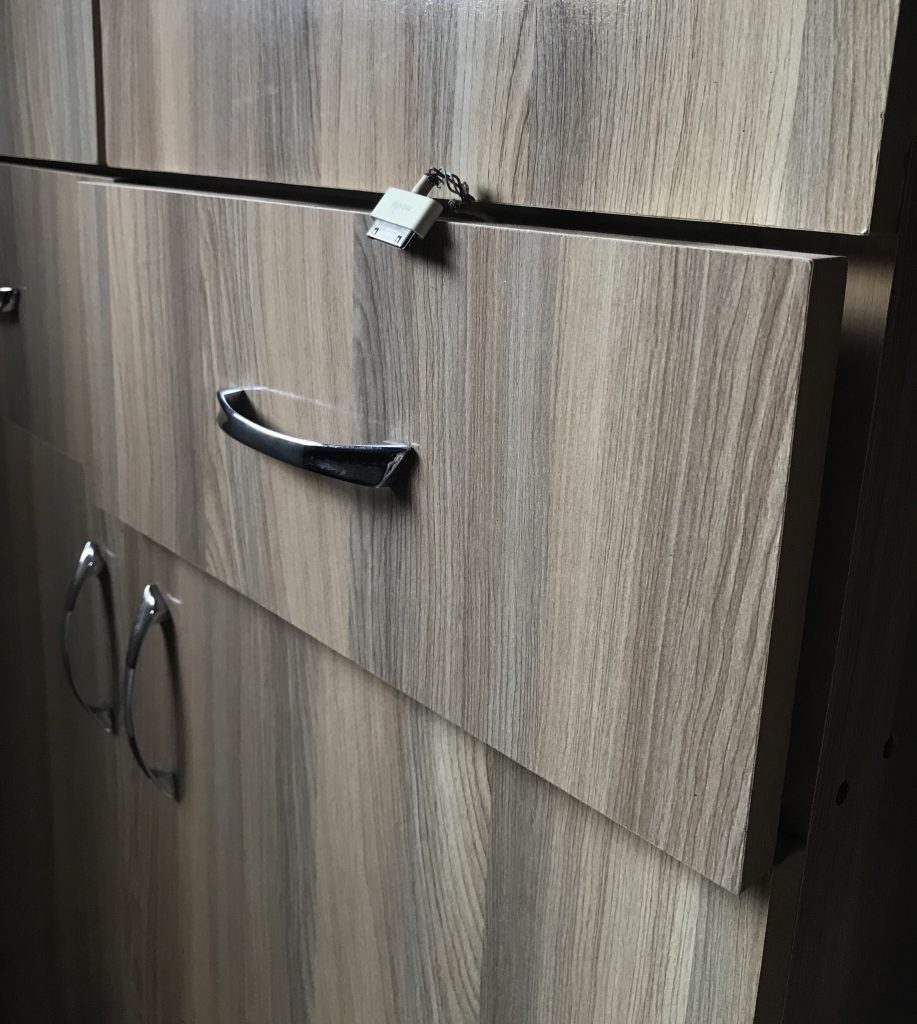
3. Step on them and deliberately rip them apart
This is by far the most straightforward and the easiest way to damage your cables.
While stepping on them, make sure you are wearing shoes with studs or heels (if you are a girl) so that you get the scientific advantage of high pressure against minimal area.
If you plan to rip them apart, do not use your hands. Do it in a more gratifying manner. Use your car. Specifically, tie one end of the cable to your car’s handle, and the other end, to a pole. Then, do some revving with your car and drive off to work. You won’t even know what happened to your $19 cable. You needn’t know.
4. By playing an iPhone pendulum by holding your lightning cable as a string
If you want to damage both your iPhone and your lightning cable, this method is by far the most amusing.
All you have to do is connect the lightning cable to your iPhone, hold the opposite end, and start swinging it. If nothing exciting happens, try whirling the iPhone around. If nothing happens yet, use your iPhone as a whip.
These methods may be sufficient to completely damage your cable to an extent that you won’t be able to recognize it as an object anymore. There are harsher ways to go about damaging a puny cable. Hit me up for more.
Albeit, if you have even a little bit of courtesy towards your gradually fraying lightning cable, you might want to know how to fix it temporarily. Look, fraying of an Apple lightning cable is inevitable. No matter what measures you take to stop it, your cables are going to fray over time. But if you can hold on to it for longer, why not, then, take a chance?
Here’s what you can do to fix fraying cables:
Use a cable protector
Since fraying of cables is a widespread issue, many have come up with official ways to counter it. You can, as a result, buy cable protectors from Amazon that eliminate further risks. Moreover, these protectors are available in different shapes and sizes. Some are even cute: like this one.
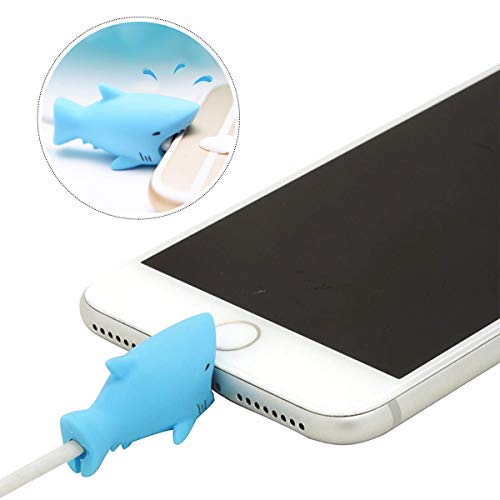
However, the thing with these protectors is that they are designed to protect your cables from fraying, not fix them. Albeit, if they can protect fraying in the first place, they can also prevent already frayed cables from
Plugging the cable in and out of your iPhone, additionally, becomes significantly easy. Plus, you get the advantage of showing off.
These are usually cheap and come in packs of five or six on Amazon.
However, the thing with these protectors is that they are designed to protect your cables from fraying, not fix them. Albeit, if they can protect fraying in the first place, they can also prevent already frayed cables from more fraying.
Plugging the cable in and out of your iPhone, additionally, becomes significantly easy. Plus, you get the advantage of showing off.
These are usually cheap and come in packs of five or six on Amazon.
Use Sugru
Sugru is a self-setting rubber having a multitude of uses. But, as per our relevance, you can use Sugru for efficiently sealing the part of the cable that is frayed. With this, you can stop further fraying of the cable.
Although, in order to let Sugru harden and stay put, make sure you let it dry for at least 24 hours after application. You can, moreover, get it from Amazon for $9.99. This isn’t a cheap option, but Sugru’s efficiency is unparalleled. Hence, it’s worth it.
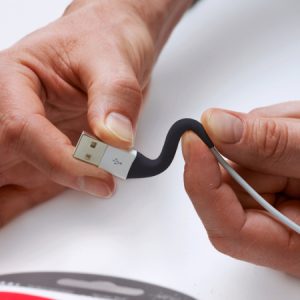
Use a little spring
Do you have click pen? Of course you do. Roll out its components, dismantling it in the process. Of all the components, you should notice a little spring near the tip. Remove that and gently slide it into your lightning cable like this:
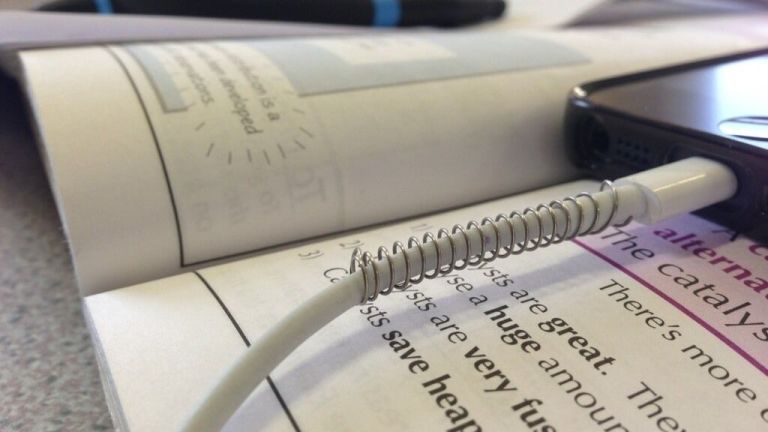
The spring provides slightly increased flexibility to the cable, while also barring you from harshly interacting with the joints of the cable (which is the main reason cables fray). It won’t, however, protect the cable extensively. In other words, even after applying this spring, you won’t be able to protect your cable from fraying; just delay it. To top it off, this method won’t cost you a dime, that is, if you have a click pen laying around.
If you were unable to get it done right, watch this video for clarity:
Use Heat Shrink tubing
A heat shrink tube is one of the cheapest, sturdiest, and the most reliable way of fixing frayed cables and preventing further frays. The application process also is oddly satisfying.


You slide in a heat shrink tube from the lightning connector end until it properly adjusts over the crucial joint. Then, you use a hairdryer to blow hot air over the heat shrink and watch the tube magically (more like, scientifically) retract to embody the cable. Albeit, make sure you do not over heat the tube as it may potentially melt the tube; and in worst cases, even the cable beneath.
Using a heat shrink is just like using a spring. Both offer an external layer of protection to the thin layering of the wire. But both can prevent only so much damage. A heat shrink, too, will inevitably succumb to intermittent harsh usage and rip apart. In order to provide more rigidity, however, try applying heat shrink over a spring-wrapped cable.
This pack of heat shrink tubing contains 580 pieces and is only available for $6.99
Use electric tape
This is again one of the cheapest methods of saving your fraying cable. It’s also the ugliest. However, due to the fact that it gets the work done, it’s advised to use it.
While applying, although, make sure that you carefully wrap the cable multiple times. “Carefully” is the keyword here since a mistake will make you unwrap the tape which will ultimately put stress on the frayed portion and damage it even more. Once you’ve successfully done it, you won’t have to worry about fraying. At least for a while.
Use Plasti Dip
Plasti Dip is a paint that solidifies into rubber with time. One of its many uses, just like Sugru, is to protect fraying of cables. As a matter of fact, the only difference between Plasti Dip and Sugru is that Sugru is easily and readily applicable while Plasti Dip requires time to dry and settle. Plasti Dip is also, as expected, a bit expensive than other methods.
I wouldn’t advise you on buying Plasti Dip explicitly for this purpose but if you have a box already laying around in your house, it’s better than other options.
No matter to what extent you go trying to fix fraying iPhone cables, at the end of the day, no one can save them from the dreadfulness of a fray. Time will come, once and for all when opting for a new cable will seem to be the best option as opposed to constant, rather inevitably
While choosing a charging cable, although, from Apple; one invariably crucial aspect needs to be checked: MFi certification.
MFi (Made For iPhone) certification is a norm concocted by Apple to help third-party manufacturers follow quality guidelines for chargers, cables, and other accessories. Apple takes this certification very seriously as non-certified products could pose potential threats and damages with daily use. In 2016, Apple cracked down on a third-party accessory maker that sold non-MFi certified accessories for Apple products.
“Counterfeit power products, such as those supplied by Mobile Star, pose an immediate threat to consumer safety because, unlike genuine Apple products, they are not subjected to industry-standard consumer safety testing and are poorly constructed with inferior or missing components, flawed design, and inadequate electrical insulation. These counterfeits have the potential to overheat, catch fire, and deliver a deadly electric shock to consumers while in normal use,” according to an article posted on PatentlyApple relaying the outcomes of the lawsuit.
That said, let’s have a look at some new, appropriate alternatives for your frayed cables.
1. AmazonBasics Nylon Braided Lightning to USB-A
This cable from AmazonBasics is cheaper and significantly tougher than the original lightning cable that Apple ships along with new products.
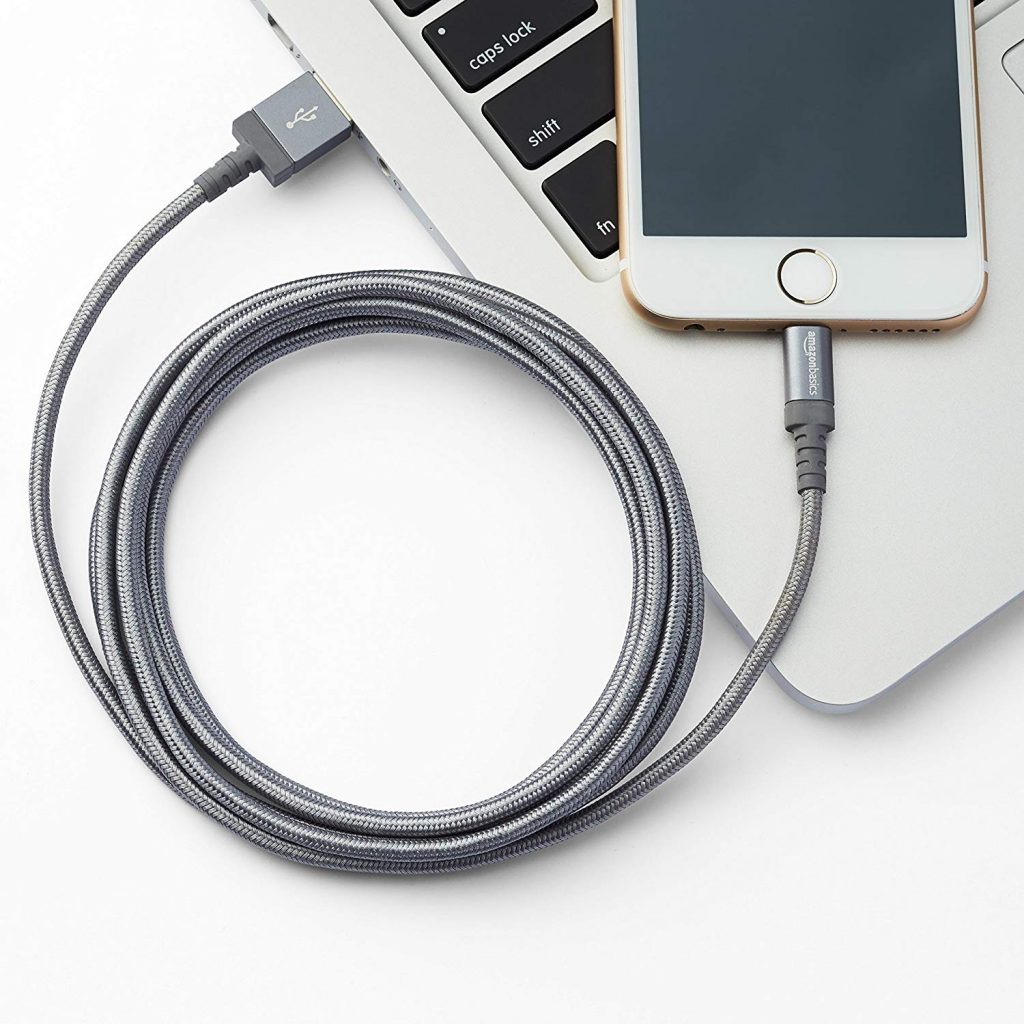

Nylon braiding’s appeal is that it strengthens the outer covering in two ways. First, the material nylon itself, since it has more elasticity, lasts longer even with dastardly usage. Then, to top it off, it’s braided to provide increased structural integrity to the cable inside. Simply put, you won’t be able to easily fray it even if you wanted to.
The cable is available in two sizes: 3-feet and 6-feet. The former costs $10 and the latter $13. For reference, note that the in-box iPhone cables measure 3.5-feet in length.
2. AmazonBasics Lightning to USB-A cable
This one from AmazonBasics is a regular cable that does not have nylon braiding. But in order to prevent fraying, its ends are coated with an additional layer of protection.
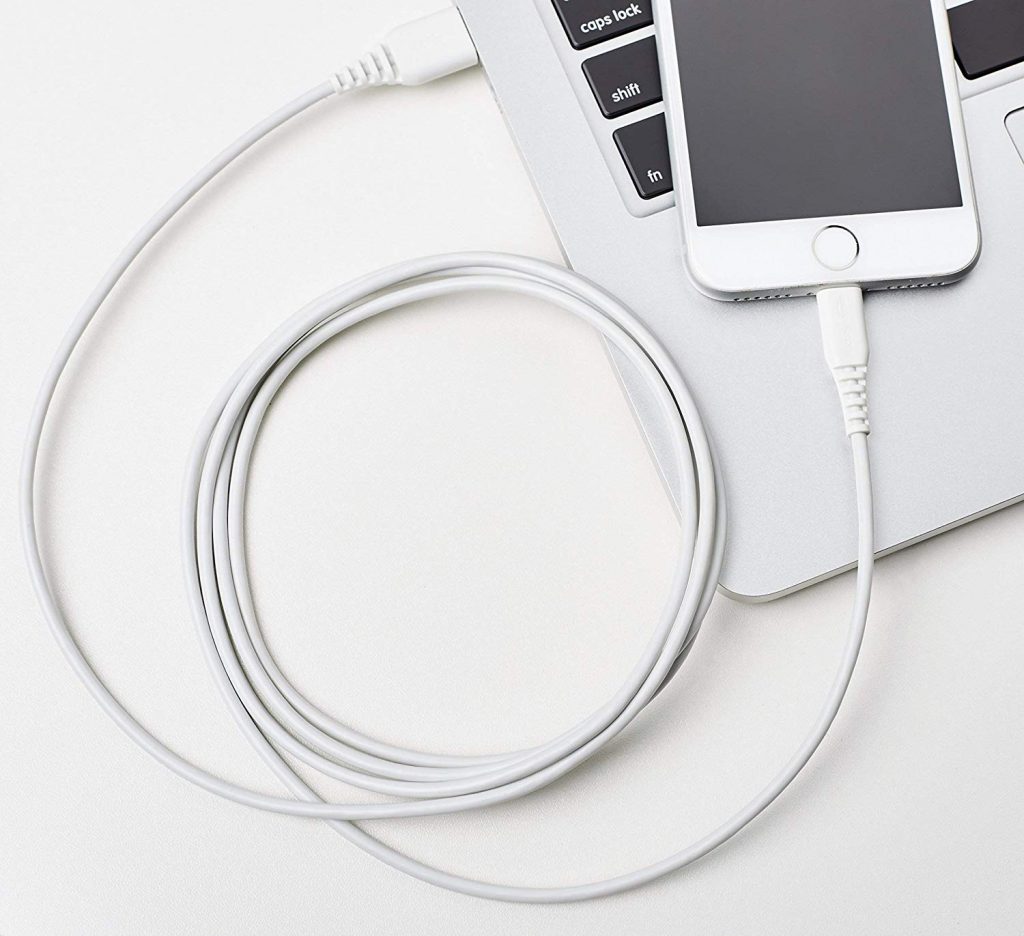

It’s a basic lightning cable that comes in five different colors for a change. Being simple, a single cable, unsurprisingly, costs $7.41. However, you can buy a pack of two or even a pack of 12 cables. Although, the cost of a 12-pack AmazonBasics lightning to USB-A cable falls around $87. You may never need so many lightning cables unless you have a business that deals with tons of iPhones.
Conclusion
Unless you want to deliberately smash your cables in protest against Apple’s incompetent nature towards its cables, you may want to take preemptive measures to protect your lightning cable from fraying.
Even though the damage is temporarily fixable, the feeling of deception Apple instills on people’s mind regarding its cables lives forever. If only the Cupertino-based company would improve the quality of its cables, this post wouldn’t have had the motive to exist.
Thoughts?
